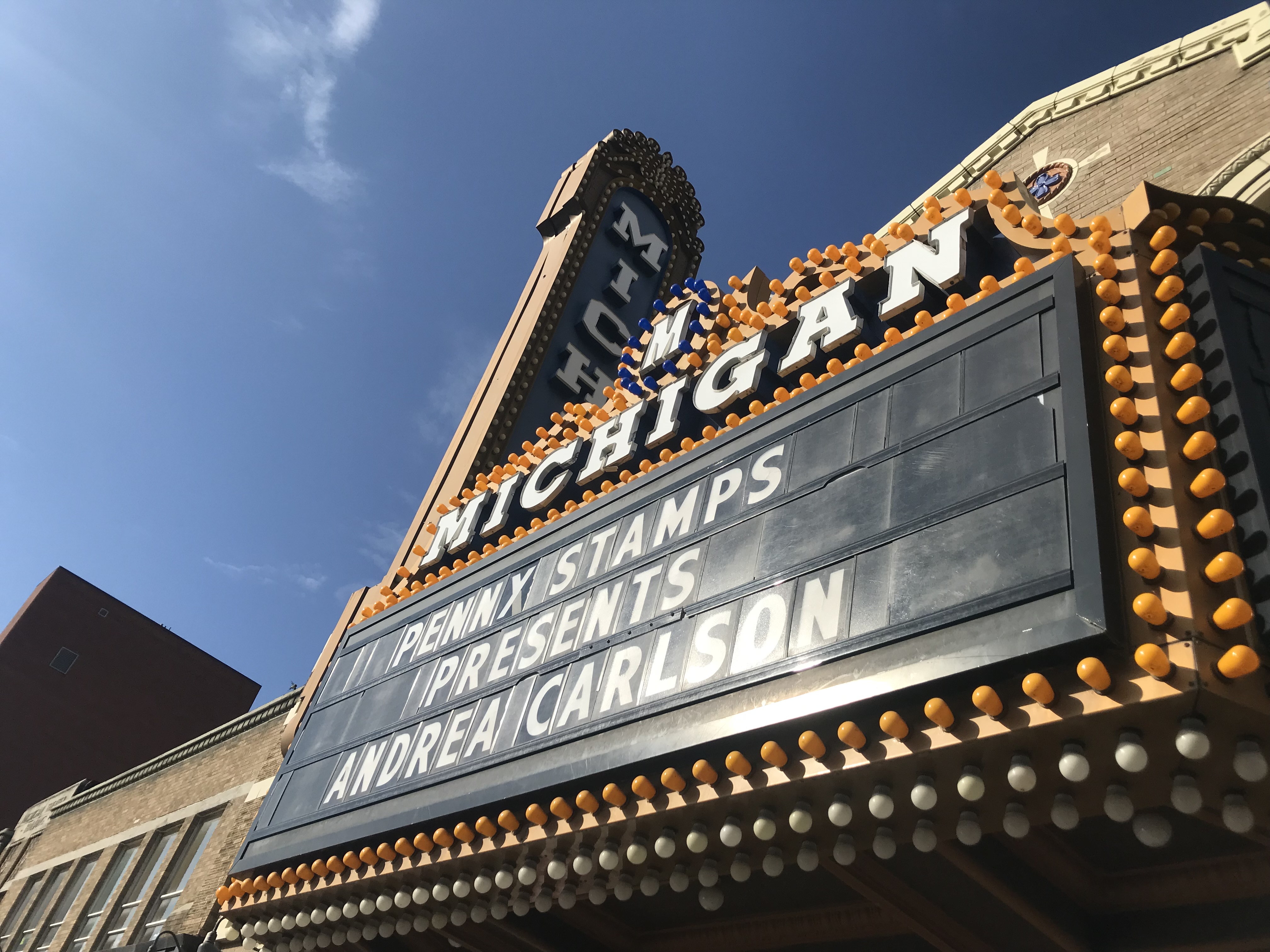Artist Andrea Carlson Speaks of a Hopeful Present and Imagined Futures at Michigan Theater

Photo by a Penny Stamps Speaker Series staff member
“Well, I’m not crying!” joked artist Andrea Carlson, as she wiped tears from her eyes and took the stage at the Michigan Theater for the Penny Stamps Speaker Series.
She’d just been introduced by U-M Museum of Art curator Jennifer Friess, who collaborated with her on Future Cache, a commission currently installed in the Vertical Gallery at UMMA. Friess had praised Carlson’s commitment to holding museums “accountable for their ongoing complicity in the erasure of Indigenous histories and presence.” She added, “This project has brought so many people together. There have been so many moments of serendipity, coincidence, and deep connection. I’m forever grateful to Andrea for her kindness and generosity. She is truly the gravity at the center drawing us all together.”
The exhibition addresses the traumatic histories of violence against Native American communities, grounding these reflections in the story of the Cheboiganing Burt Lake Band from northern Michigan.
Carlson, who titled her talk “Wholeness in the Future,” addressed the fracturing that has happened to so many Native communities and the hope that people have for healing in the distant future. “It is my understanding,” she said, “that we shouldn’t wait for the future, that wholeness is today, and that the future is today, as well.”
Andrea Carlson: Wholeness in the Future
Watch on YouTubeCarlson spoke about the Burt Lake Burn-out, when the Cheboiganing Burt Lake Band of Chippewa and Ottawa Indians were forcibly removed from their community in 1900. A land prospector, sheriff, and his deputies set fire to dozens of homes in the Band’s village, destroying every building except for a small church.
Because they no longer held their land, the Band also lost their Federal recognition. Today, the state of Michigan recognizes the Band, but they still are petitioning for Federal re-affirmation. Carlson has commemorated their fight on the 40-foot-tall “memorial wall,” which features a statement written by the Burt Lake people. The text, emblazoned in silver and gold, is translated in alternating lines of Anishinaabemowin (the first language of this land, used by the Burt Lake Band) and English (the language of the settlers of this land).
Midway through the presentation, Carlson invited out on stage her friend Mark Turcotte, a Native poet from the Turtle Mountain Band of Ojibwe, whose writing is framed as a letterpress broadside in the Future Cache exhibition. He gave a powerful reading of his poem: “A Very Distant Drumming,” which combines stories he has been told with a dream he had about his father. Turcotte summarized that his poem is “a perfect example of how the sadness, and the tragedy, and the hurt, and the healing is shared by everybody.”
Carlson is known for her site-specific installations, such as her land acknowledgement mural (“Bodéwadmikik ėthë yéyék/You are on Potawatomi Land”) in Chicago.
Andrea Carlson
Future Cache
Future Cache will be on display at UMMA through June 2024.
View Exhibition
